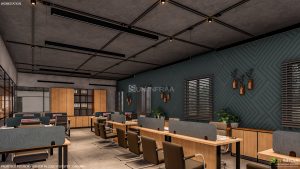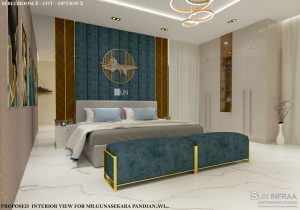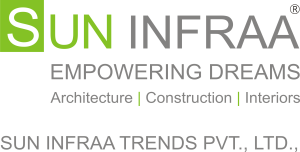Choosing the right false celling
False ceilings are an integral part of any home. They give character to the space, not only by adding depth, but also concealing materials that you might not want people to see. To quote writer William Arthur Ward, “We shape our buildings; after that they shape us.”

False ceilings have gained popularity in recent years due to their ability to provide a unique and interesting design component to decor.
False ceiling definition
The definition of a false ceiling is “a fitted ceiling that hangs below the original ceiling.”
It’s usually suspended by wooden or metal frames and has earned it the moniker ‘dropped ceiling’.”
These are often constructed in homes of any size, making them versatile enough for all sorts of spaces.
False ceilings give homeowners many options when it comes to their home’s design, adding different shapes and details to make the style unique to each homeowner.
False ceiling materials
GYPSUM
Gypsum is the most popular and common false ceiling material. It existed in early false ceilings and it has stood the test of time for more than two thousand years.
It is not only used as false ceiling material but also as a building material. So when you are looking to build false ceilings at home or in your office, you have only one choice- gypsum false ceiling.
Gypsum false ceil can be decorated with ornaments to create an elegant look or painted to form a plain surface that will blend into your existing décor.
Gypsum false ceilings are available in different styles in the market- textured, smooth finish, alcoved sheets etc. The appearance of any false ceiling depends on the choice of false ceiling material and false ceiling texture. False ceilings give a smooth and finished look to the room and this gives it an extra point in its favour as compared to other false ceiling panel materials like steel plates that leave a bare-bones impression on the room.
Plaster of Paris
A plaster of Paris ceiling can be a quick, cheap home improvement that adds value to your property. It is also an aesthetically appealing choice for many people, giving any room in the house a feeling of LED lights and ceiling panels with ceiling lights. The plaster used in plaster of Paris ceilings is mainly gypsum plaster or plasterboard.

Choice of plaster of Paris
You should consider whether you want Gypsum boards or plasterboard when choosing your false ceiling. The main difference between the two is weight; plasterboard usually has a lower load-bearing capacity than gypsum plaster, but it’s easier to install. If you are using the ceiling in part as an insulator then this will influence your choice too – Plasterboard will insulate better than gypsum plaster.
Gypsum plaster is also stronger and therefore better for rooms with heavy traffic, such as where you might expect to carry out maintenance on the small bedroom ceiling design.
wooden false ceiling ideas
False wooden ceilings are easier to install than regular wooden ceilings because you do not have to worry about wrinkles since it is only made out of wood slats and metal supports. Therefore, it can be used as an entry-level solution for homeowners who want wooden ceilings but do not want to spend their time or money on repairing damaged wooden ceilings over time. This idea will also help you choose the right wooden-finished false ceiling.
Wooden finishes are very beautiful, especially wooden finished ceilings. The wooden finishes are currently very popular, not only because wooden ceiling designs have a natural texture and wooden finish but also because they offer a way to bring out the beauty of wooden slats or wooden beams that have been built into buildings for a long time.
A common reason for choosing wooden false ceilings is that they can cover up the old damaged ceilings. It is an easy and affordable way to rehabilitate older buildings by making them look aesthetically pleasing again. In addition, the individual wooden boards used in wooden false ceilings may be manipulated as needed, giving you more freedom in false ceiling interior design.
However, although many people enjoy the look of wooden false ceilings, they need to make sure that their choice of material works with their existing wooden beam or wooden slat ceilings in the building. If they are not, you may want to consider wooden false ceiling tiles or wooden finished aluminium panels instead.
Types of false ceiling design:
Single layered
Homeowners could choose to leave it white on a white ceiling, as this adds dimension without necessarily overwhelming the space.
However, if you’d like to go out with a bang, you could choose from a variety of colours, shapes, textures and lighting options to draw the eye upwards immediately.

Multi-layered
Some homeowners go so far as to create an entire room, complete with furniture and wallpaper, in the false ceiling itself. This style of design is often more difficult to find so you may have to commission it yourself.

Linear or circular beams
These are frequently used by architects when designing modern homes to add a feeling of grandeur. Linear beams are best achieved using real materials such as metal where possible, whereas fibreglass or wood will do just fine for circular styles. Whatever your preference, again this style works best on clean lines rather than cluttered spaces where items clutter the line of sight.
Ceiling murals
This is one of the most popular choices for homeowners who want to add a touch of warmth and comfort to their space. A mural can help you feel as though you’re in a different place, whether that be a tropical beach or an expansive forest. They work best on smaller rooms where there isn’t too much going on in terms of decor, although they can also fit into larger spaces if painted with a lighter colour palette.
Fibre false ceiling, metal ceiling, glass ceiling can be added with cove lighting can be used for dining rooms and design for small bedroom.
Pros and cons of false ceiling
Advantages
Great acoustics: Adding an additional layer to the original ceiling creates better acoustics within making it a perfect design treatment for living rooms, home theatre and AV rooms in modern false ceiling design.
Brings lofty ceilings lower: For lofty vertical space that dwarfs furniture in a room, giving them more horizontal space helps make the room feel more open.
Disadvantages
Aesthetic concerns: Many people believe that a false ceiling has an industrial look. Not all false ceilings are created equal, mind you. There are several ways to make your ceiling blend in with the existing design of the room.
Building permits: A lot of work goes into installing a false ceiling which requires obtaining building permits. This is especially true if you’re converting an old space into a living, office or work area.
Time consumption: False ceilings take time to install and require specific tools for installation along with access to cables and wires that need to be connected to other parts of the house including electrical outlets and light fixtures.








